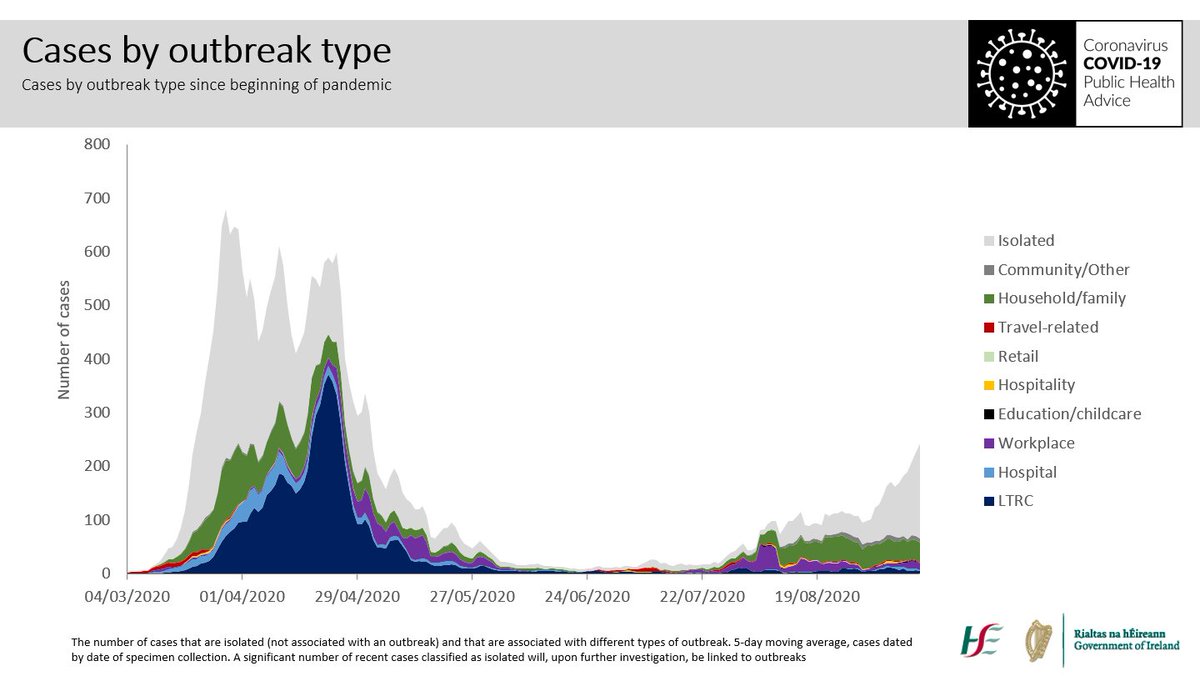
The exponential growth in SARS-CoV-2 infection in Ireland should make each and every one of us stop, think, and resolve again to do our part to suppress the virus, now and quickly. 1/7 

The call to action is the same as it has been for weeks, but much more urgent now: radically limit our discretionary social contacts, maintain physical distance and safe practices when we do meet, self-isolate and call for help with any symptoms of COVID-19. 2/7 

We have seen rising cases, now we are seeing rapid increases in the number of people admitted to hospital and ICU. 3/7 

We had, on average over the week to Tuesday 6 October: 131 people in hospital; 13 admissions per day; 21 people in ICU; and 2 admissions to ICU per day. This afternoon there are 172 people in hospital (22 admissions in the last 24 hours) and 27 in ICU (3 admissions). 4/7 

It is worth noting that at the peak of the pandemic we were at worst seeing 60-80 admissions to hospital and 10-15 admissions to ICU per day, over a limited period of 4 weeks. We are nearly a quarter of the way to those admission rates. We must change course now. 5/7 



The number of people in hospital is now growing exponentially. We did this simple exponential fit to the hospital data last Friday 1 October; while we expected it, it still worries me that the numbers are tracking this exponential curve. 6/7 

There are very few counties where the incidence is not increasing, and no county where the incidence is not a cause for concern. We are in this together. We can reverse these trends. The simple measures work. Keep it up. #HoldFirm 7/7 

• • •
Missing some Tweet in this thread? You can try to
force a refresh













